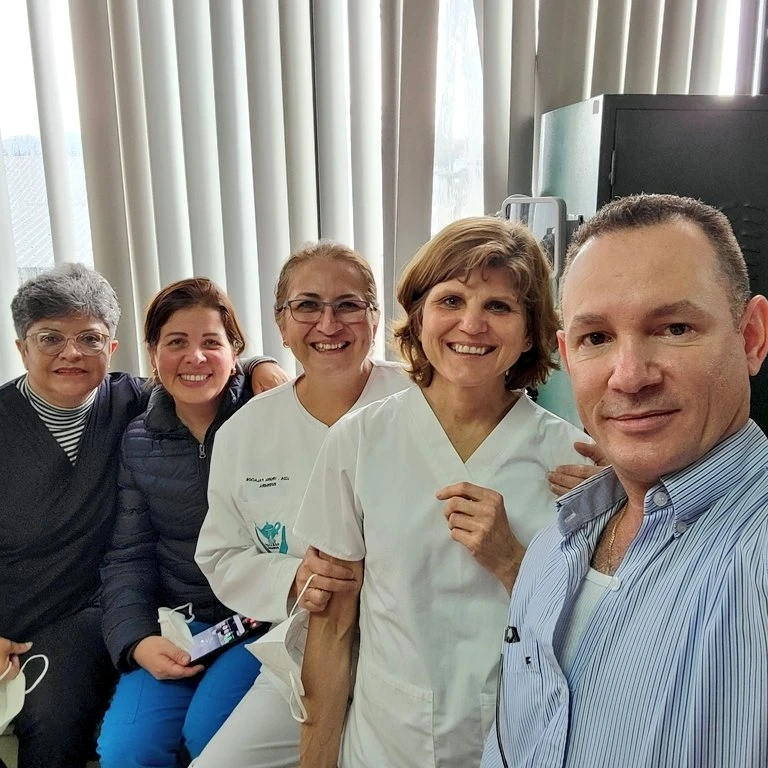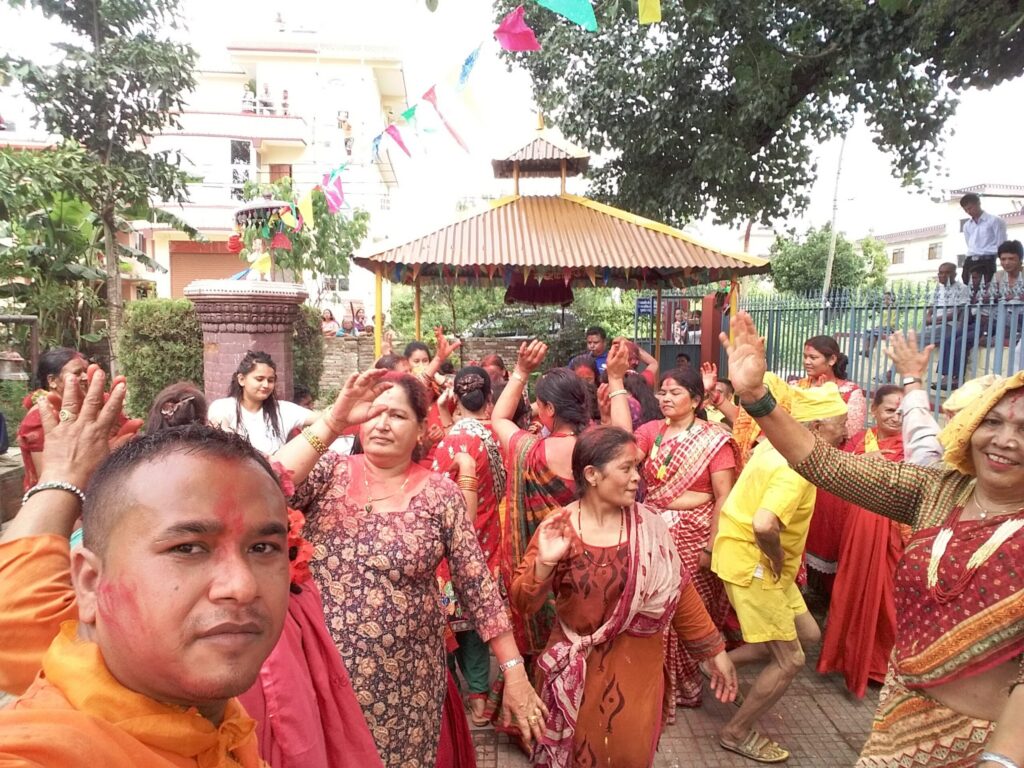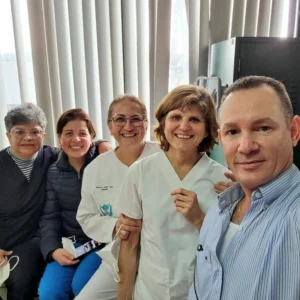Beyond the Postcard: Exploring the Realities of Volunteer Abroad Destinations” is a riveting journey through fifteen diverse countries, revealing a side to them that is rarely represented in traditional travel literature. The book dives headlong into the uncharted territories, where reality and postcard images collide, offering an authentic, gritty, and deeply human view of volunteer work around the globe.
Travel literature has often painted an idealized, superficial picture of various destinations around the world, often accentuating their exotic allure while conveniently glossing over the challenges they face. This book aims to challenge that narrative, providing an honest perspective into the lives of the people living in these countries, their struggles, their joys, and their day-to-day realities.
From the bustling markets of Accra in Ghana to the majestic temples of Kathmandu in Nepal, from the beach paradise of La Ceiba in Honduras to the vibrant nightlife of Manila in the Philippines, the reader is taken on a journey of discovery. This journey does not shy away from the harsher realities of these places – the poverty, the lack of infrastructure, the education crisis, among other social issues. Yet, it also celebrates the spirit of resilience and the vibrancy of cultures that pervade these countries, making them so much more than just their challenges.
The book was born out of a mission to raise awareness about the realities of these countries as witnessed by volunteers who served through the platform www.abroaderview.org. It’s an in-depth exploration that delves into the volunteers’ experiences, the impactful work they undertook, and how these experiences transformed them.
Beyond just being a travelogue, this book also serves as a guide for aspiring volunteers, providing insights into navigating the intricacies of volunteering abroad. From preparation to cultural etiquette, to making the most out of one’s experience, the book is packed with valuable insights gleaned from real-life experiences.
“Beyond the Postcard” is a call to action and reflection. It invites readers to redefine their perception of travel and volunteering. It encourages readers to look beyond the postcard images and engage deeply with the countries they wish to serve, understanding their challenges and strengths, and acknowledging the shared humanity that binds us all. It’s an invitation to not just see the world but to be a part of it, to contribute, to learn, and to grow.
The journey of a volunteer begins not with the first step on foreign soil, but with the decision to leave the familiarity of home behind. This chapter highlights the transformative power of taking that first step, and the significant growth that often comes with stepping out of one’s comfort zone.
A volunteer’s journey usually begins with a feeling – a deep-seated desire to contribute, to make a difference, to step into a world beyond their own and engage with it meaningfully. The chapter delves into the motivations that drive individuals to volunteer, exploring a range of factors, from personal to altruistic motivations, and everything in between.
We follow the narratives of various volunteers as they recount the moments that triggered their decision to volunteer abroad. We explore their doubts and fears, their hopes and expectations, and the transformative moments when they decided to embrace the unknown.
This chapter also explores the crucial stage of selecting a destination and a cause to support. The narrative delves into the research process, highlighting the importance of understanding a country’s culture, history, and social issues before embarking on the journey. It also touches on the process of preparing for the journey, from securing necessary documents to packing essentials.
Lastly, the chapter underscores the initial culture shock most volunteers face on arriving at their destination, and how they navigate this new reality. It explores the crucial first few days of acclimatization, and how volunteers learn to adapt, understand, and appreciate the culture they are immersed in. The chapter concludes with reflections from volunteers on their initial experiences, setting the stage for the in-depth country profiles to follow in subsequent chapters.
Chapter 2: “Guatemala: The Side of Antigua Not Shown in Tourism Brochures”
Chapter two transports us to Antigua, Guatemala, a city well known for its well-preserved Spanish Baroque-influenced architecture and vibrant culture. However, the chapter also uncovers the side of Antigua not often depicted in tourist brochures.
Our journey takes us to local communities living on the city’s outskirts, far from the cobblestone streets and pastel facades of downtown Antigua. We hear the stories of struggling families, learn about their daily challenges, and witness the stark socioeconomic disparities that exist within the city.
But amidst these hardships, we also witness resilience. We see this in the stories of volunteers who have worked with local NGOs, dedicating their time to projects that focus on education, healthcare, and community development. They share their experiences, the lessons they have learned, and how their efforts, no matter how small, have made a difference.
Chapter 3: “Nepal: Beyond Kathmandu’s Majestic Temples”
Chapter three transports us to Nepal, a land known for its stunning natural beauty and rich cultural heritage. We journey beyond Kathmandu’s majestic temples to discover a Nepal less familiar to the outside world.
The chapter explores the life of rural communities living in the shadows of the Himalayas, their struggles, and their undying spirit. The narrative paints a picture of life in these remote areas, the lack of access to basic healthcare and education, and the socioeconomic challenges faced by these communities.
The chapter also highlights the work of volunteers who have contributed to various initiatives in these regions, from teaching English in rural schools to working in health camps. Their stories underscore the positive impact of their volunteer work, but also the invaluable lessons and enriching experiences they have gained in the process.
Chapter 4: “Honduras: Unveiling the Truth Behind La Ceiba’s Beach Paradise”
Chapter four takes us to the sun-kissed beaches of La Ceiba, Honduras, a city known for its natural beauty and vibrant Carnival. However, beyond the lure of its tourist attractions, La Ceiba houses a reality far removed from the paradise depicted in travel guides.
This chapter introduces us to the underprivileged communities of La Ceiba, their struggles with poverty, lack of adequate healthcare, and educational opportunities. We learn about the socio-economic disparities and challenges faced by these communities, far from the city’s tourist trail.
In the midst of these challenges, the chapter highlights the stories of hope, resilience, and community spirit. We hear from volunteers who have worked tirelessly in local projects focusing on healthcare, education, and community development. These personal narratives shed light on the impact of their work and the profound personal growth they experienced.
Chapter 5: “Peru: The Hidden Depths of Cusco”
In the fifth chapter, we journey to Cusco, Peru, a city steeped in history and known for its archaeological wonders. However, we also delve into the unseen layers of Cusco, beyond its well-known Incan ruins and vibrant markets.
The chapter focuses on the life of local communities living in the outskirts of Cusco, their daily struggles, and the socio-economic issues they grapple with. We are introduced to their realities – the inadequate healthcare, the underfunded education system, and the challenge of living in a city where tourism heavily influences the economy.
But amidst these challenges, we witness stories of resilience and positive change. We hear from volunteers who have spent their time teaching in local schools, working in healthcare initiatives, and contributing to community development projects. Their stories offer an enlightening perspective on the profound impact of their work and the transformative experiences they encountered.
Chapter 6: “Ghana: A Glimpse Beyond Accra’s Bustling Markets”
Chapter six takes us to the heart of West Africa – Ghana. More specifically, to its capital, Accra, known for its bustling markets and lively culture. But beyond the city’s energetic facade, lies a different reality.
The chapter introduces us to the challenges faced by communities living on the fringes of Accra – the lack of access to quality healthcare, inadequate educational opportunities, and the poverty that grips many households. It paints an authentic picture of life in these areas, far from the capital’s bustling center.
In the midst of these hardships, we hear inspiring stories of change brought about by the dedicated efforts of volunteers. They share their experiences working in various fields, from healthcare and education to community development, offering a glimpse into the real impact of their contributions and the enriching personal experiences they’ve gained.
Chapter 7: “Ecuador: The Unseen Side of Quito”
Chapter seven brings us to Quito, Ecuador, a city known for its preserved colonial center and stunning surroundings. However, this chapter explores more than just the city’s UNESCO-listed attractions, diving into the unseen realities of life in Quito.
We are introduced to the city’s marginalized communities, their struggles with poverty, lack of access to quality healthcare, and challenges in education. We gain a deeper understanding of the socio-economic issues that these communities grapple with, painting a picture far removed from the city’s tourist hubs.
Yet, amidst these hardships, we also witness resilience. We hear from volunteers who have worked with local projects focused on healthcare, education, and community development. These narratives shine a light on the real-world impact of their work and the life-changing experiences they’ve had during their time in Quito.
Chapter 8: “Uganda: More Than Just Kampala”
Chapter eight takes us to Uganda, often known for its capital Kampala’s vibrant life. However, we delve into aspects beyond just the cityscapes, focusing on the everyday realities of people living in rural areas.
This chapter provides insights into the struggles faced by these communities, including inadequate healthcare facilities, limited educational opportunities, and the relentless cycle of poverty. It paints a stark picture of life outside the capital city, revealing a side of Uganda that is often overlooked.
But it is not all about hardships. We also encounter stories of change and hope. The chapter recounts the experiences of volunteers who have dedicated their time and efforts to various projects, from healthcare and education to sustainable agriculture. Through their narratives, we gain a deeper understanding of the impact they’ve made and how their experiences in Uganda have been transformative.
Chapter 9: “Costa Rica: Beyond the Pura Vida in San Jose”
In chapter nine, we journey to San Jose, Costa Rica, a city known for its relaxed ‘Pura Vida’ lifestyle and stunning natural beauty. But, we also delve into the less-explored aspects of life in San Jose.
The chapter highlights the challenges faced by underserved communities, such as poverty, access to healthcare, and educational opportunities. We learn about the stark socio-economic disparities that exist in the city, a contrast to the vibrant tourist life it’s often associated with.
Yet, amidst these challenges, we also uncover stories of resilience and hope. We hear from volunteers who have worked tirelessly in local projects focusing on healthcare, education, and community development. They share their experiences, the impact of their work, and the personal growth they’ve encountered through their volunteering journey.
Chapter 10: “Tanzania: Life Beyond the Serengeti in Arusha”
In Chapter ten, we land in Tanzania, a country famous for the Serengeti and Mount Kilimanjaro. However, our focus shifts to the city of Arusha, known as the gateway to these iconic landmarks, and we explore a side of life often left unmentioned in travel guides.
This chapter delves into the lives of the marginalized communities in Arusha, exploring their daily struggles and the socio-economic challenges they face. It paints an authentic picture of life in the city, from inadequate healthcare and education systems to the struggles against poverty.
But amidst these challenges, there is hope. We hear from volunteers who’ve spent time in Arusha, working with local initiatives on healthcare, education, and community development. These stories highlight the tangible impact of their work, but they also touch on the profound personal transformations that these experiences have triggered.
Chapter 11: “South Africa: The Contrasts of Cape Town”
Chapter eleven takes us to Cape Town, South Africa, famous for its breathtaking landscapes and rich cultural tapestry. But beyond its picturesque allure, there are deep-seated socio-economic disparities.
We’re introduced to the struggles faced by marginalized communities living in the outskirts of the city, far removed from the vibrant tourist spots. The chapter discusses the issues of inadequate healthcare, educational challenges, and the harsh realities of poverty in these areas.
Despite these challenges, there are stories of resilience and hope. Volunteers share their experiences working with local projects in healthcare, education, and community development. These narratives highlight the impact of their work, giving us a glimpse into the realities of volunteer work and the transformations they’ve experienced.
Chapter 12: “India: The Reality Beyond Jaipur’s Pink Facade”
Chapter twelve takes us to Jaipur, India, the ‘Pink City’ known for its stunning forts and vibrant culture. But there’s a side to Jaipur that goes beyond its architectural grandeur and bustling bazaars.
The chapter delves into the lives of the underprivileged communities in Jaipur, highlighting their daily struggles, socio-economic challenges, and the disparities that exist within the city. It paints an authentic picture of life beyond the city’s tourist appeal.
Yet, there’s hope even amidst these difficulties. We hear inspiring stories from volunteers who’ve worked with various local initiatives, focusing on healthcare, education, and community development. Their stories offer insights into the real impact of their contributions and the life-altering experiences they’ve had.
Chapter 13: “Cambodia: Life Beyond Angkor Wat in Siem Reap”
In Chapter thirteen, we journey to Cambodia, a country known for its historic jewel, Angkor Wat. However, our focus is on Siem Reap, the gateway to this ancient temple complex, and we explore facets of life often missed by the average tourist.
The chapter delves into the struggles faced by underprivileged communities in Siem Reap, from inadequate healthcare and limited educational opportunities to the cycle of poverty that many find difficult to break.
Despite these challenges, stories of hope and resilience are plentiful. The chapter features the voices of volunteers who have worked in Siem Reap, contributing to various local initiatives in healthcare, education, and community development. They share their experiences, the impact of their work, and the personal growth they’ve experienced.
Chapter 14: “Chile: The Hidden Faces of La Serena”
Chapter fourteen transports us to La Serena, Chile, a city known for its stunning landscapes and vibrant culture. However, beyond the tourist trails and picturesque sights, Santiago houses realities that are often unseen.
This chapter shines a light on the lives of marginalized communities in La Serena. We learn about their struggles, from access to healthcare and education to dealing with poverty, painting a picture far removed from the city’s postcard-perfect image.
Amid these challenges, we hear stories of change and resilience. Volunteers share their experiences working on various projects in La Serena, focusing on healthcare, education, and community development. Their narratives offer insight into the tangible impact of their work and the profound personal transformations they’ve undergone.
Chapter 15: “Colombia: The Unexplored Corners of Cartagena”
In the fifteenth and final chapter, we find ourselves in Cartagena, Colombia, a city celebrated for its historical charm and Caribbean allure. However, we venture beyond its beautiful facades and explore parts of the city that are rarely seen by tourists.
The chapter introduces us to the lives of the underprivileged communities of Cartagena. We learn about their struggles, including access to quality healthcare, educational challenges, and the struggle against poverty.
Despite these struggles, the chapter is replete with inspiring stories from volunteers who have spent time in Cartagena, working on healthcare, education, and community development projects. They share their experiences, shedding light on the impact of their efforts and the personal growth they have experienced.
As we close the final chapter of “Beyond the Postcard: Exploring the Realities of Volunteer Abroad Destinations,” we come away with a broader, deeper understanding of what it means to be a volunteer abroad. Each chapter has taken us on a journey beyond the postcard-perfect images of these destinations, revealing the realities of life for the local communities.
From the bustling streets of Kathmandu to the vibrant culture of Cape Town, we’ve witnessed the challenges these communities face. We’ve confronted the harsh realities of poverty, lack of healthcare, and limited educational opportunities that exist far from the tourist trails. But we’ve also seen hope, resilience, and the indomitable spirit of humanity.
The heart of this book is the volunteers – their experiences form the thread that binds these chapters together. Through their stories, we’ve glimpsed the transformative power of volunteering abroad – not just for the communities they serve but for the volunteers themselves. Their narratives have painted a picture of personal growth, cultural exchange, and the profound impact of giving back.
As we reflect on their experiences, we’re reminded that volunteering abroad isn’t about ‘saving’ these communities but about working with them, learning from them, and supporting them in their struggles. It’s about building bridges between cultures, breaking down barriers, and fostering a global community bound by shared humanity.
In the end, “Beyond the Postcard” is more than a book about volunteer travel. It’s a call to action – a reminder of the power we each hold to make a difference in our world. It’s a testament to the value of empathy, open-mindedness, and the willingness to step out of our comfort zones. Because it’s only when we dare to go beyond the surface, beyond the postcard, that we truly begin to understand the world – and our place within it.
As we conclude our journey within the pages of “Beyond the Postcard: Exploring the Realities of Volunteer Abroad Destinations,” we invite you to continue exploring the opportunities that exist to make a tangible difference in the world.
Visit our website, www.abroaderview.org, where you’ll find an extensive array of volunteer programs in different countries worldwide. Each program is uniquely structured to address specific community needs, from healthcare and education to conservation and community development.
Take a moment to browse through our diverse locations, understand the challenges each community faces, and discover how you can contribute your time, skills, and passion. As you’ve seen throughout this book, volunteering abroad is not just about the contribution to the community, but also the profound personal growth and learning that accompanies this journey.
Whether you’re drawn to the vibrant cultures of South America, the mesmerizing landscapes of Africa, or the rich history of Asia, we have a program that fits your interests and aspirations.
Join us at A Broader View and step into an experience that goes beyond the ordinary, beyond the postcard. Your journey of transformation starts here.
-
Volunteering Abroad with Medical Missions: Make a Difference Today

Join medical group trips, Nurses Without Borders, and Dentists Without Borders to make a difference in underserved communities worldwide. Learn about the countries where these programs operate and read real-life experiences from volunteers. Volunteering overseas is an excellent opportunity to make a difference in the lives of others while experiencing new cultures and forging unforgettable…
-
Embrace Overseas Service | Transform Lives Through Global Volunteerism

International Volunteering: Discover Meaningful Travel and Transform Lives with A Broader View
-
A World of Opportunities: Unveiling the Benefits of International Volunteer Programs

Discover numerous benefits of international volunteer programs and unleash a world of rewarding opportunities with our in-depth guide.



